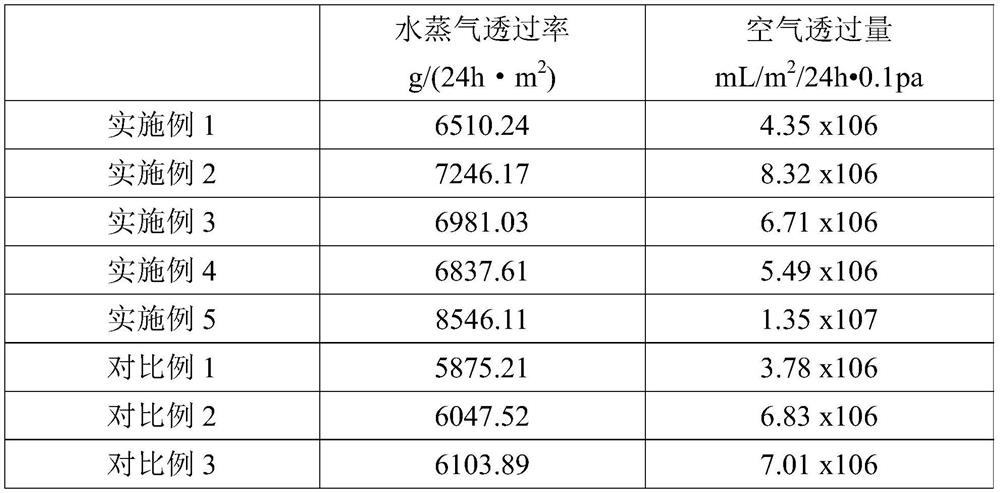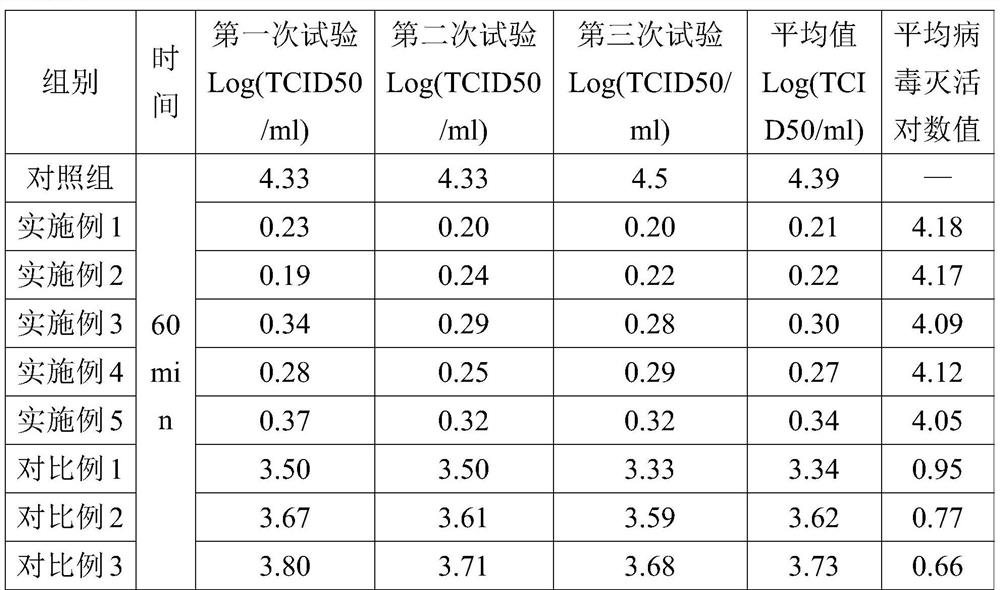Preparation method of antiviral total heat exchange fresh air film
A total heat exchange, anti-virus technology, applied in coatings, textiles and paper making, etc., can solve the problems of consumers' respiratory diseases, lack of bactericidal function, breeding of molds, etc.
- Summary
- Abstract
- Description
- Claims
- Application Information
AI Technical Summary
Problems solved by technology
Method used
Image
Examples
Embodiment 1
[0044] Add 26g of p-chloromethylstyrene and 19.6g of propyl dimethyl tertiary amine into the acetone solution, heat until the acetone refluxes, react for 2 hours, add n-heptane to obtain a precipitate, wash with acetone three times and then suction filter, and the filtered product Vacuum dried to constant weight to obtain polymerizable quaternary ammonium salt.
[0045] Under a nitrogen atmosphere, 14g of polymerizable quaternary ammonium salt, 3.2g of acrylonitrile and 0.1g of initiator (azobisisobutyronitrile) were slowly added dropwise to the solvent DMF (dimethylformamide), and the temperature was raised to 65°C. After reacting for 5 hours, deionized water was added to obtain a precipitate, which was washed three times and filtered with suction, and the separated product was vacuum-dried to obtain a quaternary ammonium salt copolymer.
[0046]2g of quaternary ammonium salt copolymer and 8g of polyvinyl alcohol (Anhui Wanwei, 1799) were dissolved in 200g of DMF (dimethylfor...
Embodiment 2
[0048] Add 15.4 g of monochloropropene and 20.4 g of triethylamine into the acetone solution, heat until the acetone is refluxed, react for 2 hours, add n-heptane to obtain a precipitate, wash with acetone three times and then suction filter, vacuum-dry the filtered product to constant weight, A polymerizable quaternary ammonium salt is obtained.
[0049] Under a nitrogen atmosphere, slowly drop 10.8g of polymerizable quaternary ammonium salt, 6.3g of styrene and 0.05g of initiator (azobisisobutyronitrile) into the solvent DMF, raise the temperature to 55°C, react for 6h, add deionized The precipitate was obtained with water, which was washed three times and then suction-filtered, and the separated product was vacuum-dried to obtain a quaternary ammonium salt copolymer.
[0050] The quaternary ammonium salt copolymer of 3g and 7g polyvinyl alcohol (Anhui Wanwei, 1799) are dissolved and dissolved in 200gDMF, and the solution is coated on a PP microporous membrane (Sanshui Tongx...
Embodiment 3
[0052] Add 14.8g of 4-bromo-2-pentene and 19.6g of propyldimethyl tertiary amine to the acetone solution, heat until the acetone refluxes, react for 2h, add n-heptane to obtain a precipitate, wash it with acetone three times, and then filter it with suction. The obtained product was vacuum-dried to constant weight to obtain a polymerizable quaternary ammonium salt.
[0053] Under nitrogen atmosphere, 6.9g polymerizable quaternary ammonium salt, 5.3g methyl acrylate and 0.1g initiator (azobisisobutyronitrile) are slowly added dropwise in the solvent DMAC (dimethylacetamide), and the temperature rises for 65 ℃, reacted for 5 hours, added deionized water to obtain a precipitate, washed three times, and filtered with suction, and vacuum-dried the separated product to obtain a quaternary ammonium salt copolymer.
[0054] Dissolve 1.5g of quaternary ammonium salt copolymer and 8.5g of polyacrylic acid (Shandong Xintai, 30% PAA) in 200g of DMAC (dimethylacetamide), and coat the solut...
PUM
| Property | Measurement | Unit |
|---|---|---|
| molecular weight | aaaaa | aaaaa |
Abstract
Description
Claims
Application Information
 Login to View More
Login to View More - R&D
- Intellectual Property
- Life Sciences
- Materials
- Tech Scout
- Unparalleled Data Quality
- Higher Quality Content
- 60% Fewer Hallucinations
Browse by: Latest US Patents, China's latest patents, Technical Efficacy Thesaurus, Application Domain, Technology Topic, Popular Technical Reports.
© 2025 PatSnap. All rights reserved.Legal|Privacy policy|Modern Slavery Act Transparency Statement|Sitemap|About US| Contact US: help@patsnap.com


